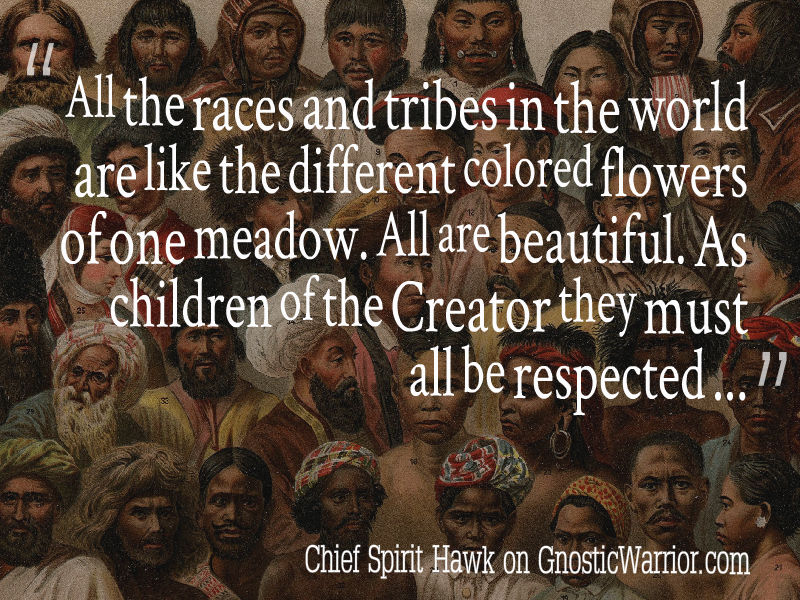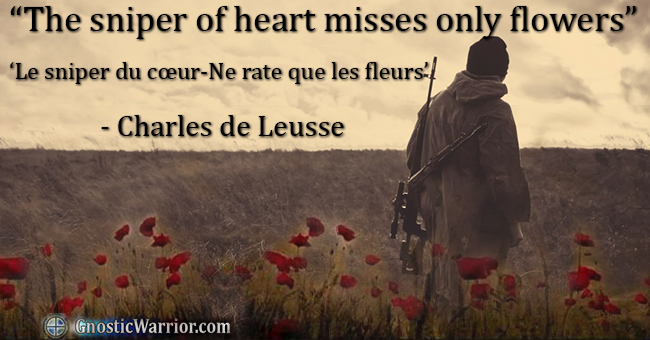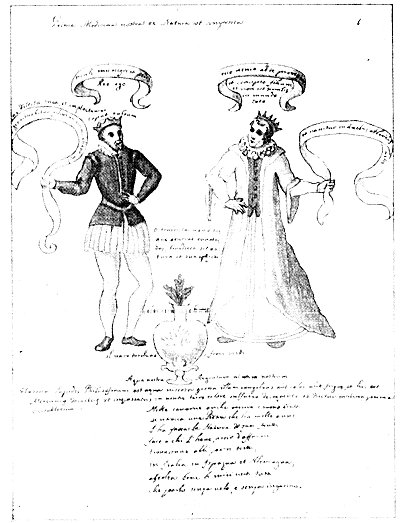The Rosicrucians used a garland of roses to signify the same spiritual vortices, which are referred to in the Bible as the seven lamps of the candlestick and the seven churches of Asia. In the 1642 edition of Sir Francis Bacon’s History of Henry the Seventh is a frontispiece showing Lord Bacon with Rosicrucian roses for shoe buckles.
In the Hindu system of philosophy, each petal of the lotus bears a certain symbol which gives an added clue to the meaning of the flower. The Orientals also used the lotus plant to signify the growth of man through the three periods of human consciousness–ignorance, endeavor, and understanding. As the lotus exists in three elements (earth, water, and air) so man lives in three worlds–material, intellectual, and spiritual. As the plant, with its roots in the mud and the slime, grows upward through the water and finally blossoms forth in the light and air, so the spiritual growth of man is upward from the darkness of base action and desire into the light of truth and understanding, the water serving as a symbol of the ever-changing world of illusion through which the soul must pass in its struggle to reach the state of spiritual illumination. The rose and its Eastern equivalent, the lotus, like all beautiful flowers, represent spiritual unfoldment and attainment: hence, the Eastern deities are often shown seated upon the open petals of the lotus blossoms.
The lotus was also a universal motif in Egyptian art and architecture. The roofs of many temples were upheld by lotus columns, signifying the eternal wisdom; and the lotus-headed scepter–symbolic of self-unfoldment and divine prerogative–was often carried in religious processions. When the flower had nine petals, it was symbolic of man; when twelve, of the universe and the gods; when seven, of the planets and the law; when five, of the senses and the Mysteries; and when three, of the chief deities and the worlds. The heraldic rose of the Middle Ages generally has either five or ten petals thereby showing its relationship to the spiritual mystery of man through the Pythagorean pentad and decad.
CULTUS ARBORUM
The worship of trees as proxies of Divinity was prevalent throughout the ancient world. Temples were often built in the heart of sacred groves, and nocturnal ceremonials were conducted under the wide-spreading branches of great trees, fantastically decorated and festooned in honor of their patron deities. In many instances the trees themselves were believed to possess the attributes of divine power and intelligence, and therefore supplications were often addressed to them. The beauty, dignity, massiveness, and strength of oaks, elms, and cedars led to their adoption as symbols of power, integrity, permanence, virility, and divine protection.
Several ancient peoples–notably the Hindus and Scandinavians—regarded the Macrocosm, or Grand Universe, as a divine tree growing from a single seed sown in space. The Greeks, Persians, Chaldeans, and Japanese have legends describing the axle tree or reed upon which the earth revolves. Kapila declares the universe to be the eternal tree, Brahma, which springs from an imperceptible and intangible seed–the material monad. The mediæval Qabbalists represented creation as a tree with its roots in the reality of spirit and its branches in the illusion of tangible existence. The Sephirothic tree of the Qabbalah was therefore inverted, with its roots in heaven and its branches upon the earth. Madam Blavatsky notes that the Great Pyramid was considered to be a symbol of this inverted tree, with its root at the apex of the pyramid and its branches diverging in four streams towards the base.
The Scandinavian world-tree, Yggdrasil, supports on its branches nine spheres or worlds,–which the Egyptians symbolized by the nine stamens of the persea or avocado. All of these are enclosed within the mysterious tenth sphere or cosmic egg–the definitionless Cipher of the Mysteries. The Qabbalistic tree of the Jews also consists of nine branches, or worlds, emanating from the First Cause or Crown, which surrounds its emanations as the shell surrounds the egg. The single source of life and the endless diversity of its expression has a perfect analogy in the structure of the tree. The trunk represents the single origin of all diversity; the roots, deeply imbedded in the dark earth, are symbolic of divine nutriment; and its multiplicity of branches spreading from the central trunk represent the infinity of universal effects dependent upon a single cause.

Moe is the founder of GnosticWarrior.com. He is a father, husband, author, martial arts black belt, and an expert in Gnosticism, the occult, and esotericism.



![How the South Saxons received Eadbert and Eolla, and the West Saxons, Daniel and Aldhelm, for their bishops; and of the writings of the same Aldhelm [705 A.D.] | Book 5 | Chapter 17 How the South Saxons received Eadbert and Eolla, and the West Saxons, Daniel and Aldhelm, for their bishops; and of the writings of the same Aldhelm [705 A.D.] | Book 5 | Chapter 17](https://www.gnosticwarrior.com/wp-content/plugins/contextual-related-posts/default.png)
